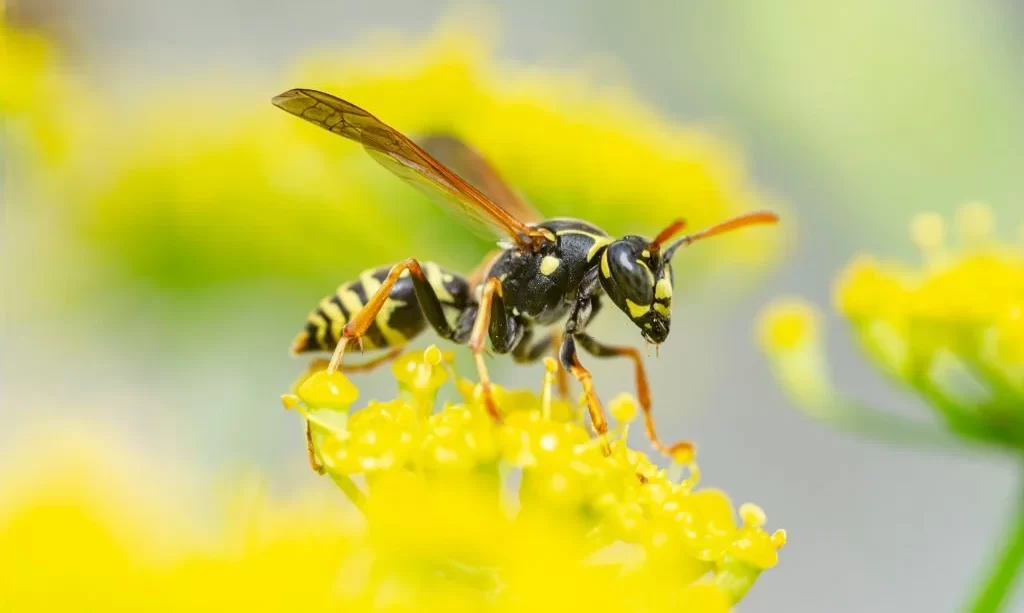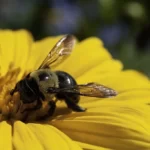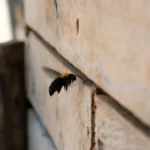Yellow jackets, those distinctively marked and sometimes stinging insects, are a common presence in many outdoor settings. While they serve an important role in nature as pollinators and scavengers, their attraction to certain elements can lead to unwelcome encounters for humans. To better coexist with these insects and reduce the chances of disturbing their nests, it’s essential to understand what attracts yellow jackets. In this article, we’ll explore the factors that draw these insects to specific places and situations. By gaining insight into their preferences, you can take steps to minimize their presence when enjoying the great outdoors.
Sweet Scents
Yellow jackets have a pronounced affinity for sweet scents, which often lure them in search of sugary treats. These insects are highly attracted to:
- Sugary Drinks: Soda, juice, and sweet cocktails can all pique the interest of yellow jackets when left unattended.
- Fruits: Ripe, sweet fruits like melons, peaches, and berries can be irresistible to yellow jackets.
- Floral Fragrances: Yellow jackets may also be drawn to floral scents, so be cautious when wearing strongly scented perfumes or lotions outdoors.
Understanding this attraction to sweet scents is crucial when planning picnics, barbecues, or any outdoor gatherings. Taking measures to keep sweet temptations covered and sealed can help reduce the likelihood of yellow jacket intrusions.
Proteins and Meats
In addition to their fondness for sweets, yellow jackets are also enticed by proteins and meats. These insects are opportunistic scavengers, and the scent of protein-rich foods can quickly grab their attention. Here’s what you need to know about their attraction to proteins and meats:
- Picnics and Barbecues: When you’re enjoying a picnic or cooking up a barbecue, be aware that yellow jackets may be drawn to items like hamburgers, hot dogs, and grilled chicken.
- Fishing Trips: Anglers might encounter yellow jackets while handling bait or cleaning fish by the water.
- Outdoor Dining: Even outdoor dining at restaurants can be a magnet for yellow jackets if there are meat dishes on the menu.
To avoid attracting yellow jackets during outdoor mealtime, consider covering your food when not eating, using mesh food covers, and disposing of food scraps properly.
- ✨New UPGRADE SOLAR WASP TRAP: The 2023 new hornet trap has three specially designed channels for catching wasps. The entrance of the hornet traps is large and the exit is small. Once hornet inside the trap, they cannot escape and drown in the liquid or dehydrate to death. Through the solar panel, wasp killer trap can be charged during the day and run smoothly at night. In addition, when you turn on the switch, the blue UV light will emits warm light to catch flying insects in the dark.
- Style : Modern
- Item dimensions : 3.5 inches
- Power source type : solar powered
- Is electric : False
Garbage and Food Residue
Yellow jackets are relentless foragers, and they won’t hesitate to investigate your trash if it contains food residue. Here’s what to watch out for:
- Garbage Bins: Yellow jackets are often attracted to open or unsealed garbage bins, where they can find leftover food scraps and discarded items.
- Food Residue: Plates, utensils, and containers with food residue can be particularly appealing to these insects.
Proper waste disposal and keeping garbage bins securely closed are key steps in preventing yellow jackets from congregating around your outdoor spaces. By minimizing the availability of food sources, you can reduce their interest in your vicinity.
Bright Colors and Floral Patterns
Yellow jackets are not only attracted to food but also to certain visual cues. Their keen eyesight makes them responsive to bright colors and floral patterns. Here’s why these visual elements can draw them in:
- Bright Clothing: If you’re wearing bright-colored clothing, especially with floral patterns, yellow jackets may mistake you for a source of nectar and be more likely to investigate.
- Picnic Accessories: Items like picnic blankets, tablecloths, or decorations with vibrant colors or floral designs can also capture the attention of these insects.
While it’s important to enjoy the outdoors with style, it’s a good idea to be mindful of your attire and accessories when in areas known for yellow jacket activity. Choosing more subdued colors can help reduce the likelihood of attracting them.
- THE ORIGINAL – There’s a reason you see this trap everywhere: it’s the original, and it works! There are roughly a dozen species of stinging yellow jackets throughout North America, and this trap is designed to lure them all.
- HIGHLY EFFECTIVE – Lured in by our specially formulated attractant, yellowjackets fly in through the holes in the bottom of the trap, continue upward through the interior cone, and become trapped. Once inside, they die from dehydration—no killing agent required.
- NON-TOXIC – Unlike potentially harmful sprays, this trap relies on a non-toxic mode of action to eliminate yellowjackets. Its durable plastic construction is built to withstand many seasons of use. Attractant refills are available.
- SMARTER PEST CONTROL – Our Reusable Yellowjacket Trap is specially designed to attract and kill yellowjackets, not beneficial honeybees. The included attractant lasts for weeks without daily maintenance.
- MADE IN THE USA – At RESCUE!, our goal is to design, manufacture, and market the safest and most effective pest control solutions available for homeowners. We are proud to manufacture our products in the USA!
Nectar from Flowers
Yellow jackets play a role in pollination, which means they’re naturally attracted to the nectar found in flowers. Here’s what you should know about this aspect of their behavior:
- Flower Visits: Yellow jackets will visit flowers to feed on nectar, and in the process, they may inadvertently transfer pollen from one flower to another, aiding in pollination.
- Plant Variety: Certain types of flowers may be more attractive to yellow jackets than others, depending on the nectar’s scent and accessibility.
While yellow jackets’ visits to flowers are generally beneficial for ecosystems, it’s essential to be aware of their presence when gardening or spending time in areas with blooming plants. Avoid sudden movements or disturbing them to prevent potential stings.
Understanding these factors that attract yellow jackets can help you take proactive steps to minimize encounters and safely coexist with these insects in outdoor environments.
Nesting Sites
Yellow jackets are highly territorial insects, and understanding what attracts them to potential nesting sites is crucial for avoiding unwanted encounters. Here’s what you need to know:
- Underground Burrows: Yellow jackets often build their nests underground in abandoned rodent burrows or holes in the soil. These hidden locations provide shelter and protection for their colonies.
- Building Eaves and Soffits: In urban areas, yellow jackets may nest in the eaves or soffits of buildings, as they offer a secure, elevated location.
- Sheltered Spots: Any sheltered area, like hollow trees, shrubs, or dense vegetation, can become a nesting site for yellow jackets.
When you’re aware of potential nesting sites, you can take precautions to avoid disturbing them. Keep a safe distance from ground holes, regularly inspect your property for signs of nesting activity, and consider professional removal if a nest is found in a problematic location.
Conclusion
Understanding what attracts yellow jackets is vital for safe and harmonious coexistence with these insects in outdoor environments. Whether it’s their preference for sweet scents, proteins, or meats, their interest in bright colors and floral patterns, or their role in pollination, recognizing these factors allows you to take proactive measures to reduce the likelihood of encountering yellow jackets. Additionally, being mindful of their nesting habits and practicing proper waste disposal can further minimize interactions. By following these guidelines and respecting the nature of these insects, you can enjoy the outdoors while minimizing the risk of yellow jacket disturbances.







